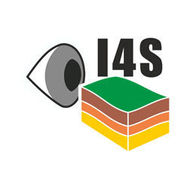Impact of potassium fertilisation on mobile proximal gamma-ray spectrometry: case study on a long-term field trial (2023)
Pätzold S., Ostermann M., Heggemann T., Wehrle R.
Precision Agriculture, (),
doi:10.1007/s11119-023-10071-3
Abstract
AbstractMobile proximal gamma-ray spectrometry (GS) is an emerging approach to estimate soil texture directly in the field. It relies on gamma radiation emitted during the natural decay of potassium-40 (K-40) and other isotopes. The K-40 counts are correlated with total K content, mineralogical soil composition and therefore with soil texture. Yet, it is not clear if K fertilisation impacts the ratio of K-40 to total K which would necessitate to take the fertilisation history into account for soil sensing applications. To elucidate this question, a well-documented long-term experiment was selected. The soils of the Rengen grassland experiment (55 plots) were investigated for total K (XRF-K) and for K-40 via mobile proximal GS. No significant differences in XRF-K and K-40 were found between the treatments with and without K fertilisation, although formely published results point to negative and positive K balances, respectively. Fertiliser analysis revealed a ratio of K-40 to total K that was almost identical to the natural abundance of 0.0117%. It was concluded that it is not necessary to take K fertilisation history into account when predicting soil texture from mobile proximal GS on agricultural land for, e.g., precision farming purposes.